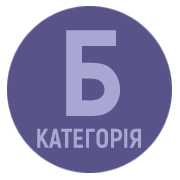ФОНЕТИЧНІ ПРОЯВИ РЕКУРЕНТНОСТІ В ТЕКСТАХ УКРАЇНСЬКИХ ПИСЬМЕННИКІВ
DOI:
https://doi.org/10.32782/philspu/2025.9.6Ключові слова:
рекурентність, фонетичні засоби, звукопис, ритм, асонанс, алітерація, ономатопеяАнотація
У статті досліджується фонетична рекурентність, що вважається одним із найдавніших і найпоширеніших поетичних прийомів в українській літературі. Вона виступає важливим засобом створення звукової гармонії, емоційного забарвлення та підкреслення смислових акцентів у тексті. Крім того, демонструється, як багаторазове відтворення певних звуків формує ритм і мелодію, що наголошує на значущості окремих слів та ідей, дозволяючи читачеві глибше зануритися в атмосферу твору.Автор детально розкриває різні аспекти фонетичних засобів, таких як алітерація, асонанс, ритм і ономатопея. Наводяться приклади використання цих прийомів у творах українських письменників різних літературних періодів, що підкреслює їхню роль у створенні яскравих образів і передачі емоцій. Алітерація, наприклад, забезпечує звукову гармонію та підсилює емоційний вплив, додаючи мові ритмічності та плавності, в той час як асонанс просуває мелодійність та сприяє формуванню образів, легких для запам’ятовування.Слід додати, що в роботі ритм аналізується як чинник, що надає тексту динаміки і змушує читача активно переживати події, описані в творі. Звертається увага на різні методи створення ритмічних візерунків, які можуть включати копіювання слів, конструкцій і синтаксичних елементів. Стаття підкреслює, що такі ритмічні структури не лише формують емоції героїв, але й підсилюють драматизм ситуації.Автор вважає, що вивчення цього явища в українській літературі відкриває нові перспективи для аналізу текстів, адже фонетична рекурентність має глибокі традиції та активно використовується в художніх творах. Висновки статті стверджують, що рекурентність, як важливий інструмент митця, сприяє створенню унікального художнього світу, роблячи літературу виразнішою і більш насиченою в емоційному плані. Дослідження фонетичної рекурентності не лише підтверджує високий рівень літературної майстерності авторів, але й відкриває нові горизонти для подальших досліджень у цій галузі.
Посилання
Чернікова О. І. Класифікація звукових повторів як складової поетики художнього тексту (на матеріалі творів Дж. Р. Р. Толкієна). Наукові праці Кам’янець-Подільського національного університету імені Івана Огієнка. Філо- логічні науки. 2011. Вип. 27. С. 345–351.
Стецик М. С., Ковач Г. Й. «Від душі поета – у душу слухача» (поетичний звукопис Ліни Костенко). Науковий вісник ДДПУ імені І. Франка. Серія: Філологічні науки (мовознавство). 2021. № 15. С. 180–187.
Мішеніна Т. М. Авторські фонетичні стилістичні засоби в поетичному мовленні Миколи Вінграновського. Актуальні проблеми філології і методики викладання мов: зб. наук. праць. Кривий Ріг, 2007. Вип. 5. С. 88–95.
Ніколаєнко О. І. Ритміко-звукові особливості епіграм. Studia linguistica. 2012. Вип. 6 (1). С. 308–314.
Кабиш М. Ю. Звукопис в українській поезії першої половини ХХ століття: семантика, функції: дис. … канд. філол. наук: 10.02.01. Київ, 2015. 267 с.
Науменко О. В. Фоностилістика поезії Едгара Аллана По та її відтворення у перекладах: дис. … канд. філол. наук: 10.02.16. Одеса, 2018. 241 с.
Головко Андрій. Бур’ян. URL: https://www.ukrlib.com.ua/books/printit.php?tid=520.
Вовчок Марко. Інститутка. URL: https://www.ukrlib.com.ua/books/printit.php?tid=457.
Мирний Панас. Хіба ревуть воли, як ясла повні? URL: https://www.ukrlib.com.ua/books/printit.php?tid=983.
Карпенко-Карий Іван. Сто тисяч. URL: https://www.ukrlib.com.ua/books/printit.php?tid=1007.
Федькович Юрій. Три як рідні брати. URL: https://www.ukrlib.com.ua/books/printit.php?tid=542.
Франко Іван. Захар Беркут. URL: https://www.ukrlib.com.ua/books/printit.php?tid=645.
Малик Володимир. Черлені щити. URL: https://www.ukrlib.com.ua/books/printit.php?tid=940.







